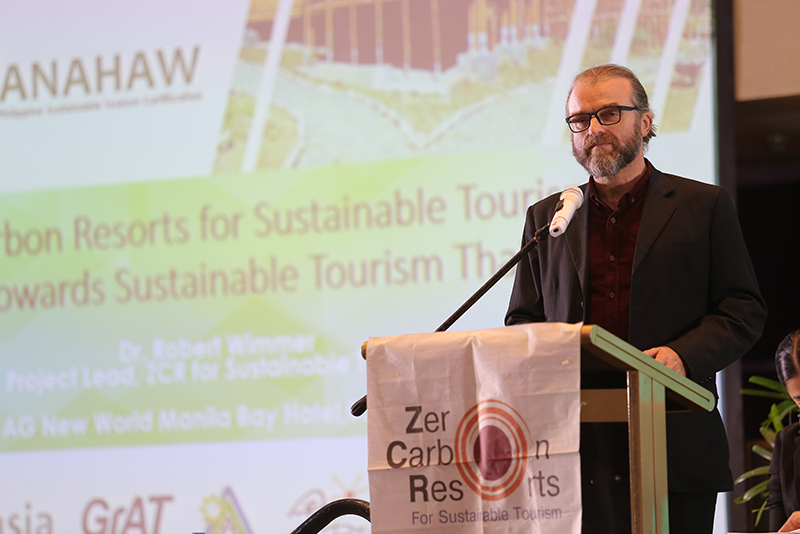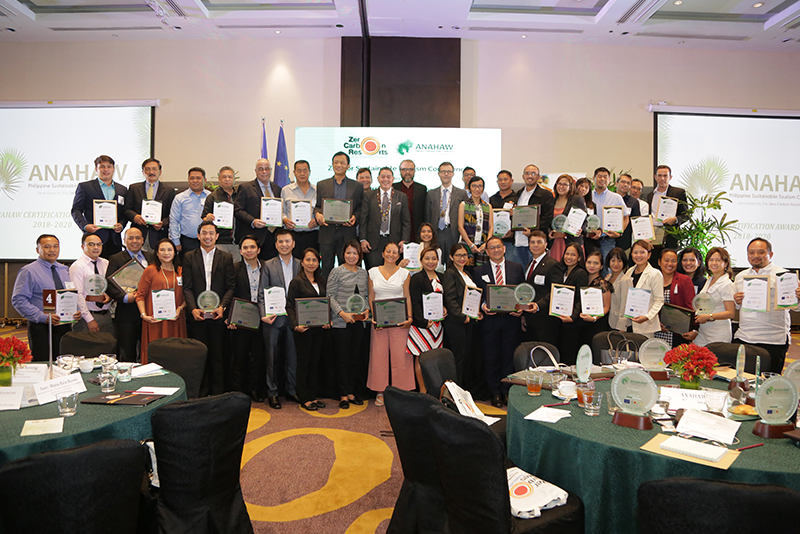ANAHAW Certification Awards Environmentally Sustainable Hotels and Resorts
In this time of global warming and climate change, the integration of two principles of “sustainable” and “responsible” in tourism has become a relevant issue among industry leaders, organizations, and local communities.
Under the Department of Tourism’s (DOT) National Tourism Development Plan (NTDP) to “develop highly competitive, environmentally sustainable and socially responsible tourism,” the first national green certification program was launched—called the ANAHAW-Philippine Sustainable Tourism Certification.
Also read: 5 Eco-Friendly Accommodations in the Philippines to Put in Your Itinerary
 Dr. Robert Wimmer of GrAT
Dr. Robert Wimmer of GrAT
ANAHAW has been developed by the Center for Appropriate Technology (GrAT) with the DOT to mainstream sustainable tourism and energy efficient operations in the tourism sector in the country.
Through the green certification program, more hotels and resorts around the country will be able to shift to more sustainable operations. Hotels and resorts equipped with the best practices and techniques for sustainable development and ecotourism will largely contribute to the country’s green economy, leading to a highly competitive, environmentally sound and socially responsible Philippines.
Also read: WWF Lists 9-Step Restaurant Guide for Sustainable Dining
Official accreditation from the DOT is mandatory before hotels and resorts could apply for the ANAHAW certification, which is categorized into five levels:
- Level 1 corresponds to 50 to 59% satisfaction of the applicable criteria and indicators, with savings reaching up to 29%;
- Level 2 scores between 60-69%, with savings up to 35%;
- Level 3 scores between 70-79%, with savings up to 40%;
- Level 4 scores between 80-89%, with savings up to 46%;
- Level 5 scores between 90-100%, with savings up to 56%.
Innovation in sustainability
GrAT’s technical consultants conduct an assessment using key indicators that create a clear picture of an establishment’s performance and its corresponding environmental impact.
Also read: Tourism VS. Ecotourism: What’s the Difference?
The group assesses measuring energy (kilowatt-hour per guest-night) and water (cubic meter per guest-night) consumption. Said assessment also considers the promotion of cultural heritage, environmental protection, community involvement, and local government regulation compliance.
Once certified, the ANAHAW certification is valid for two years and can be renewed.
 ANAHAW validation and on-site inspection
ANAHAW validation and on-site inspection
Pioneer ANAHAW awardees include the following:
Level 4
- Amarela Resort (Bohol),
- Daluyon Beach and Mountain Resort (Palawan)
- Sangat Island Dive Resort (Palawan)
Level 3
- Cebu Elicon House (Cebu)
- The Mayflower Inn (Cebu)
- West Gorordo Hotel (Cebu)
- Seda Nuvali (Laguna)
- Crimson Hotel Filinvest City (Muntinlupa City)
- Shangri-la’s Mactan Resort and Spa (Cebu)
Also read: Seda Hotel Nuvali: A Blissful Hotel Living
 The 27 pioneer ANAHAW certified tourism establishments
The 27 pioneer ANAHAW certified tourism establishments
Looking for the next awardees
The quest for green tourism continues as GrAT begins a new chapter and gears up for its next round of ANAHAW certification applications.
“These innovations will not just empower and provide long-term value to tourism establishments but will also raise awareness and educate tourists,” shared Dr. Robert Wimmer of GrAT. “This is a call for tourism establishments to step forward, shift their minds and take part in this movement. Our team is ready to guide new partners in achieving their full ‘green’ potential.”
To know more about ANAHAW Philippine Sustainable Tourism Certification program, call 02-559-9712 or e-mail: zcr@grat.at. You may also log on to www.zerocarbonresorts.eu or www.anahaw.net
This is a press release. Minor edits were made prior to publishing.













